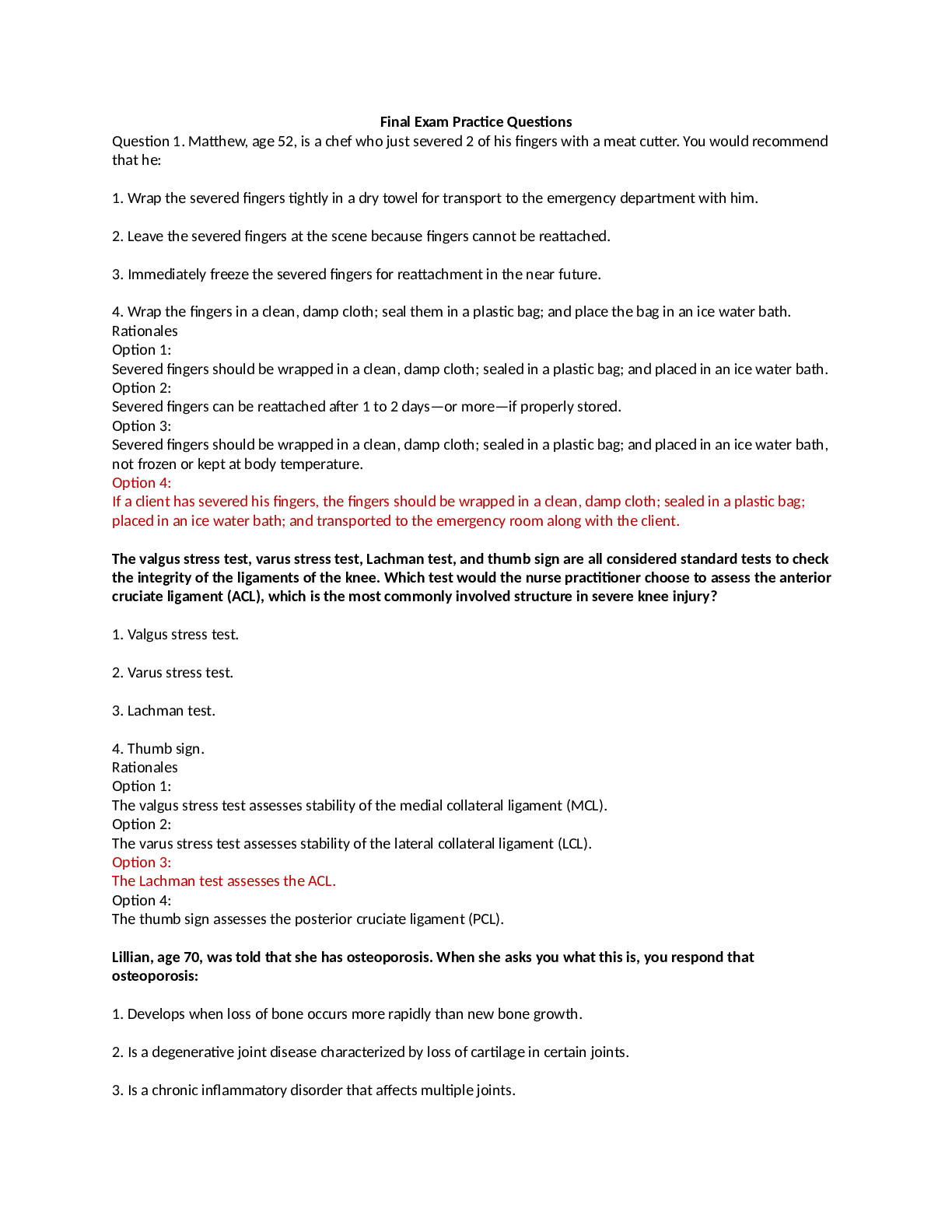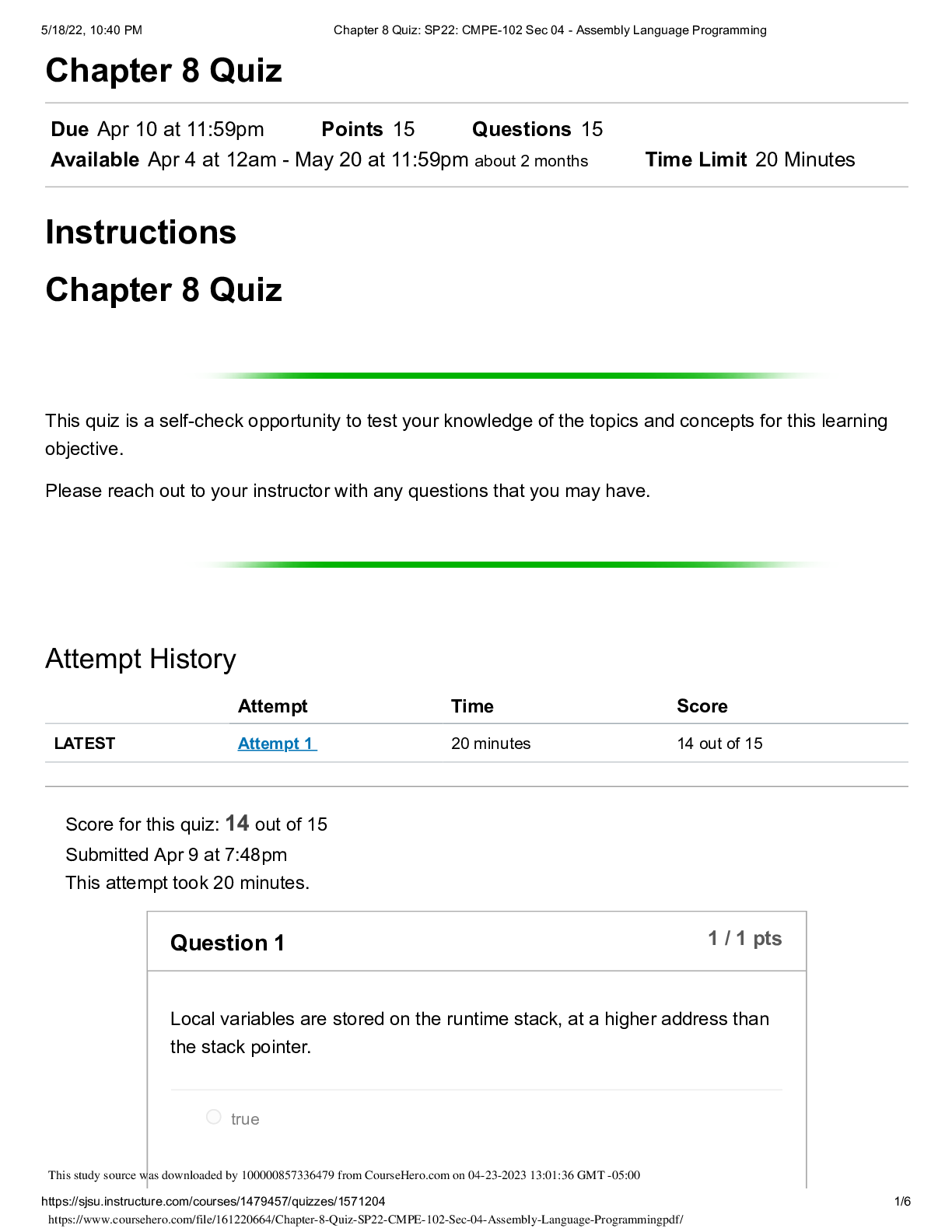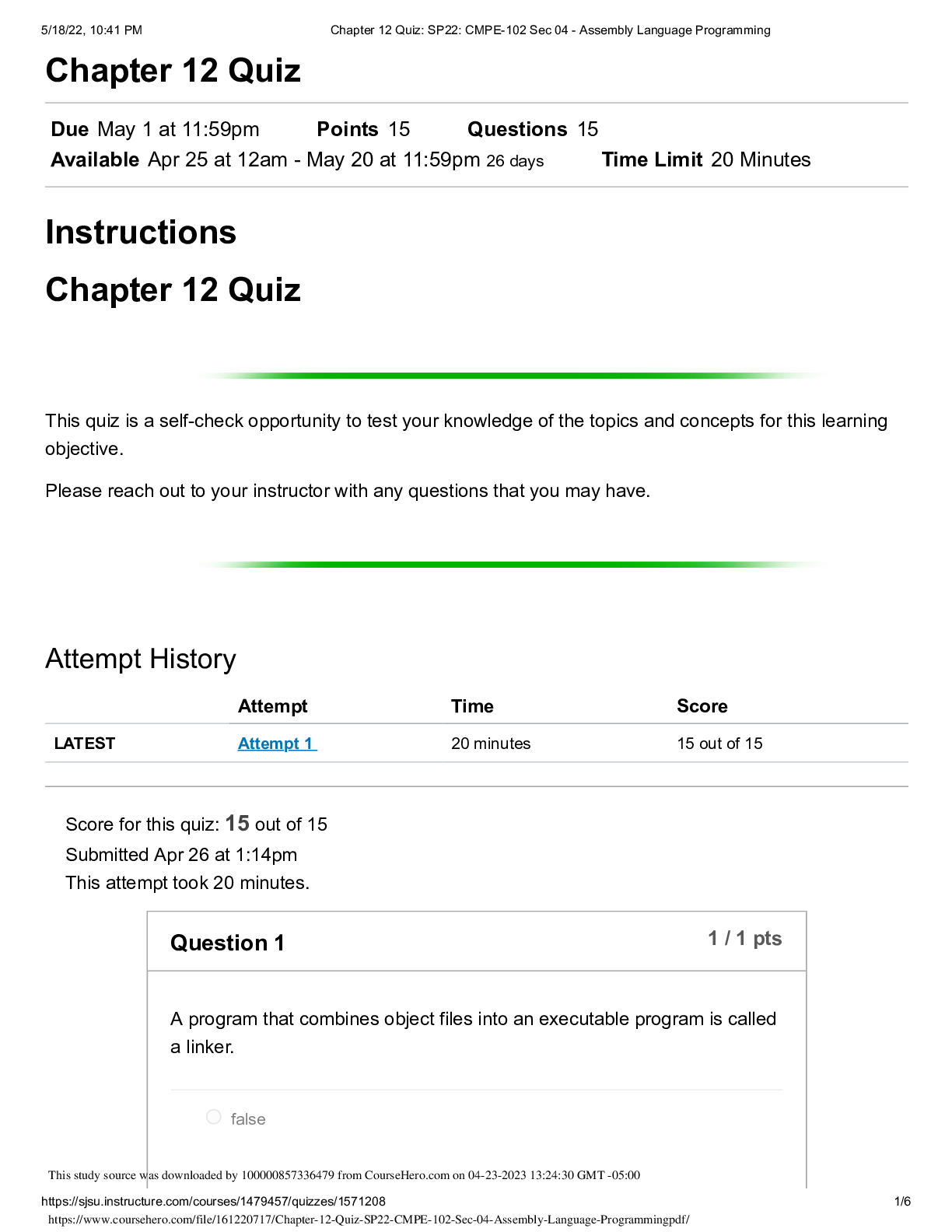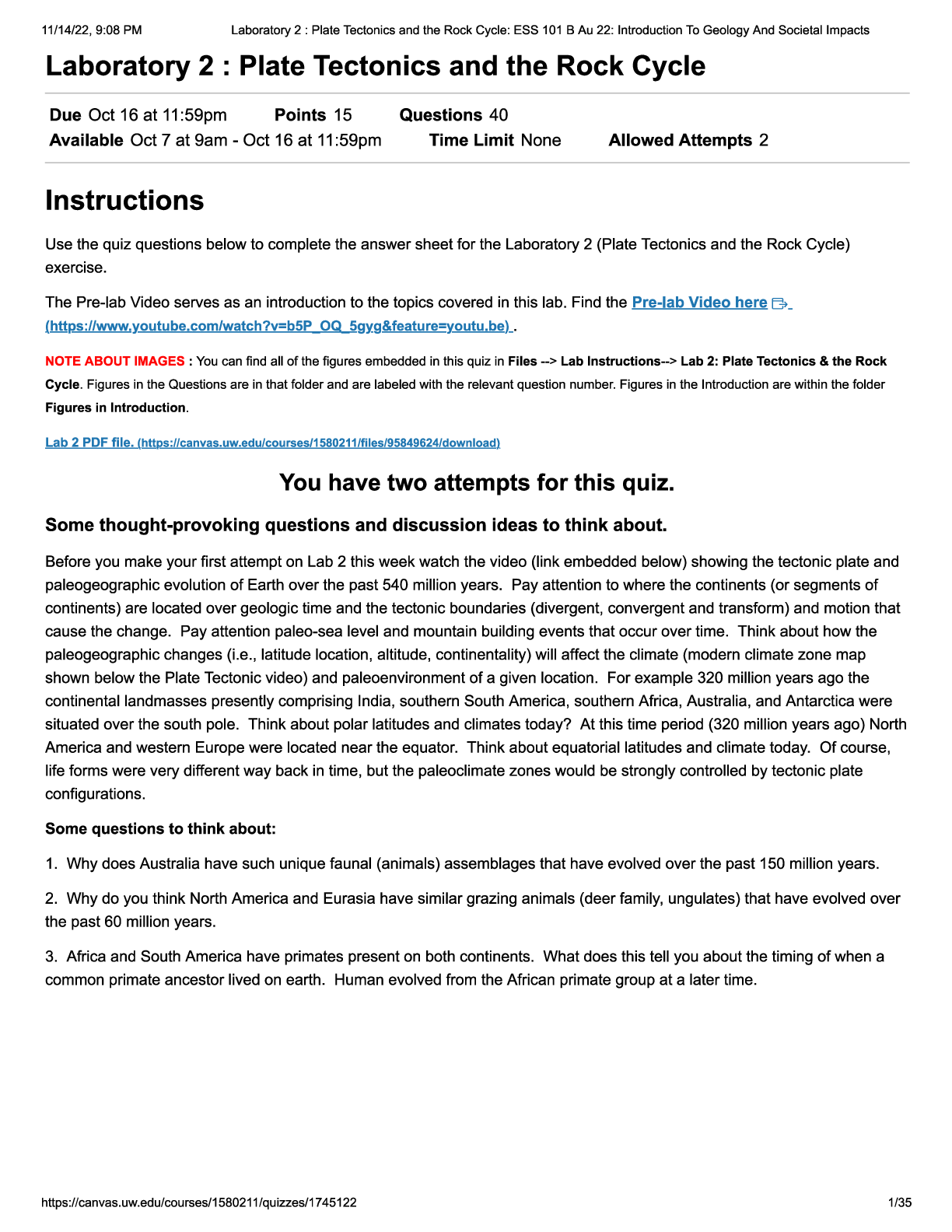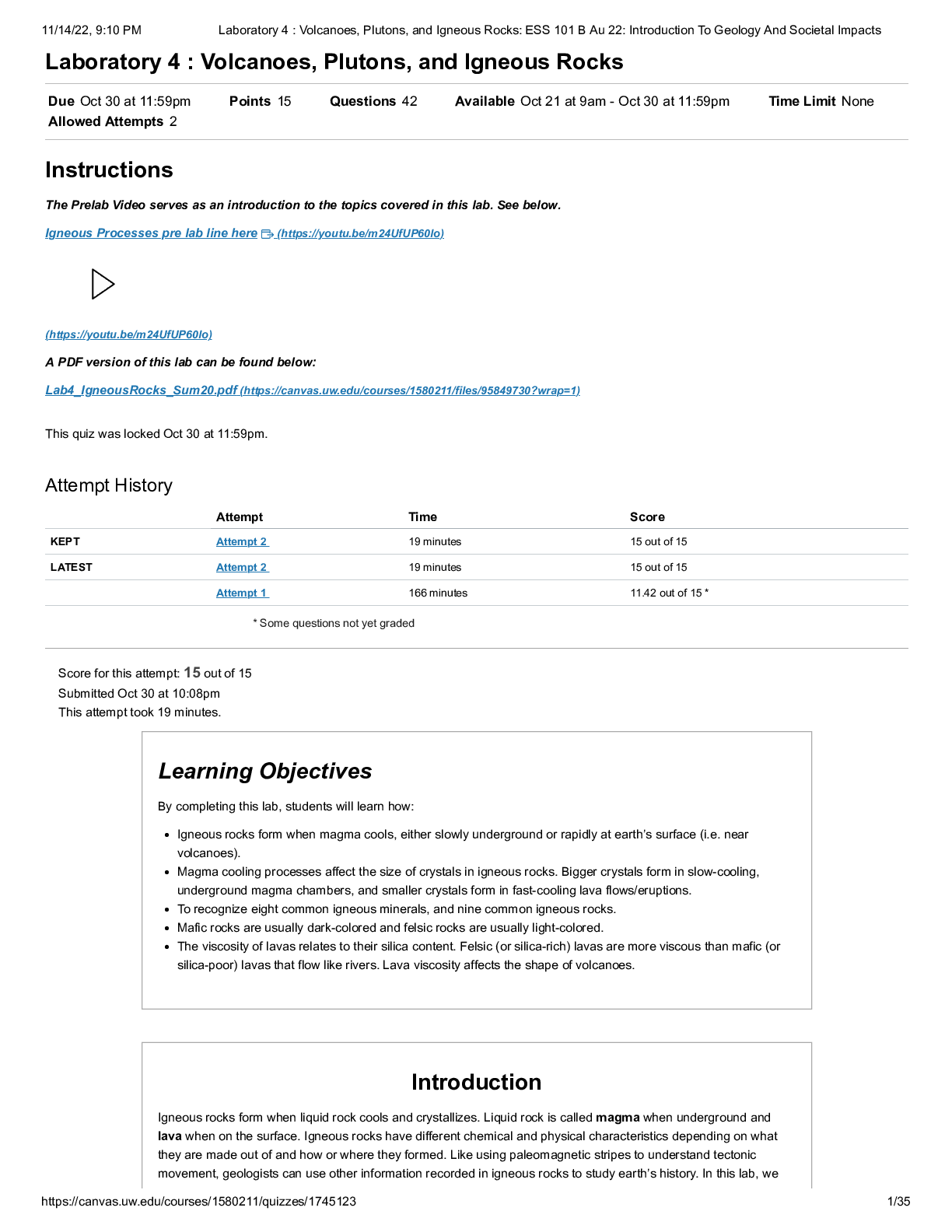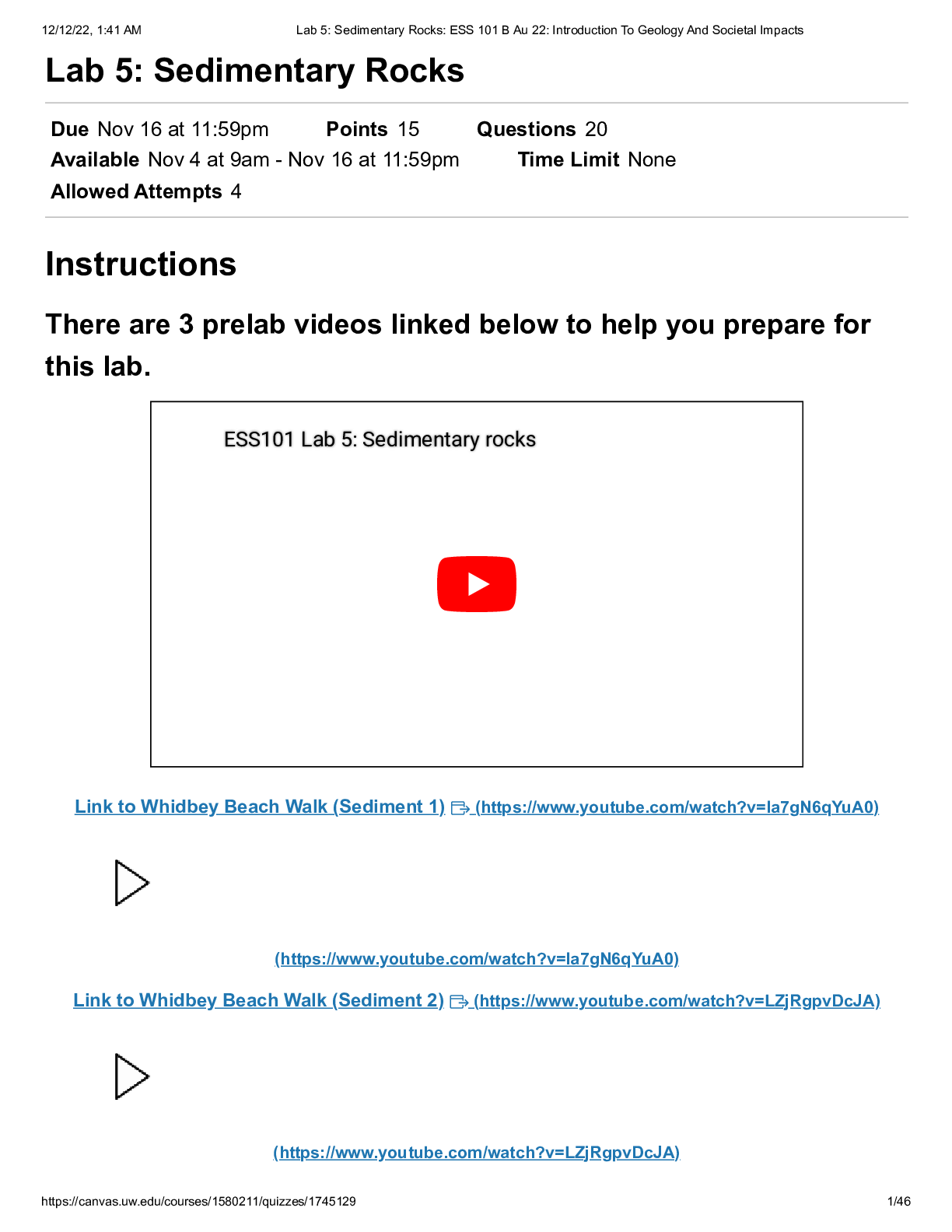*NURSING > QUESTIONS & ANSWERS > NR511 Differential Diagnosis and Primary Care. Week 5 Quiz. Attempt Score 15 Out of 15. NR 511 Cham (All)
NR511 Differential Diagnosis and Primary Care. Week 5 Quiz. Attempt Score 15 Out of 15. NR 511 Chamberlain College of Nursing.
Document Content and Description Below
NR511 Differential Diagnosis and Primary Care. Week 5 Quiz 1. Question: A 55-year-old female presents to the clinic with complaints of left hand and wrist pain and swelling after a slip and fall on ... the ice yesterday. On examination, the clinician notes tenderness at the “anatomical snuffbox.” This finding most likely indicates which of the following? 2. Question: A 28-year-old male presents to the clinic for follow-up from the emergency department, where he was seen for right forearm pain 3 days ago. He works as a carpenter and is right hand dominant. He states he was … with right forearm tendinitis and is not sure what this means. As part of teaching, the clinician explains that the condition is caused by inflammation of one or more of the tendons. Which of the following describes tendons? 3. Question: A conservative approach is recommended in the initial approach to the management of low back pain. Which of the following would … an appropriate treatment plan for a 32-year-old obese male (BMI 33) diagnosed with an acute lumbar strain? 4. Question: A 10-year-old male presents to the clinic after jumping off a 2-foot wall, twisting his foot and ankle upon landing. His ankle x-ray demonstrates a fracture of the distal tibia, over the articular surface, through the epiphysis and physis. Based on the Salter-Harris classification of growth plate injuries, the clinician knows that this is a ______? 5. Question: A 48-year-old male presents with acute low back pain in the right that increases when standing and bending. Upon physical exam, lower extremity muscle strength is 5/5 and straigh leg raise test is negative. Which of the following is the most likely diagnosis? 6. Question: A 42-year-old professional golfer complains of chronic back pain for many years. His workup reveals that it is not the result of a degenerative disc problem. His back “goes out” about twice per year, and he is out of work for about a week each time. Which of the following should the clinician advise? 7. Question: In assessing the skeletal muscles, the clinician turns the patient’s forearm so that the palm is face up. This is called: 8. Question: A 49-year-old female presents with low back pain radiating into the right leg,. An x-ray of the lumbosacral spine is within normal limits. Which of the following diagnoses do you explore further? 9. Question: A 55-year-old patient is able to complete range of motion (ROM) against gravity with some resistance. The nurse practitioner would assign which of the following numerical grades to this manual muscle testing description? 10. Question: A 62-year-old woman presents to the clinic with chronic low back pain. She states she has developed episodes of fecal incontinence and numbness in her right leg over the last week. Upon examination the clinician notes decreased perianal sensation to pinprick. What should the clinician do next? 11. Question: A 16-year-old male patient presents to the clinic after sustaining a football injury to his right knee. The clinician elicits a positive anterior/posterior drawer sign. This test indicates an injury to the ______? 12. Question: A 13-year-old obese (body mass index [BMI] above the 95th percentile) boy reports low-grade left knee pain for the past 2 months. He denies antecedent trauma but admits to frequent “horseplay” with his friends. The pain has progressively worsened, and he is now unable to bear weight at all on his left leg. His current complaints include left groin, thigh, and medial knee pain and tenderness. His examination demonstrates negative drawer, Lachman, and McMurray tests; left hip with decreased internal rotation and abduction; and external hip rotation with knee flexion. Based on the above scenario, the clinician should suspect which of the following? 13. Question: The valgus stress test, varus stress test, Lachman test, and thumb sign are all … standard tests to check the integrity of the ligaments of the knee. Which of the following would the clinician choose to assess the anterior cruciate ligament (ACL), which is the most commonly involved structure in severe knee injury? 14. Question: A 55-year-old female patient presents with complaints of pain and paresthesias in the left ulnar aspect of the forearm, thumb, and middle finger following a C6 & C7 nerve root dermatomal pattern. This is known as ________? 15. Question: A 16-year-old boy presents to the office with complaints of low back pain after lifting heavy boxes. In discussing with him proper body mechanics to prevent future injuries, the clinician should advise which of the following? [Show More]
Last updated: 9 months ago
Preview 1 out of 8 pages

Reviews( 0 )
Document information
Connected school, study & course
About the document
Uploaded On
May 30, 2020
Number of pages
8
Written in
Additional information
This document has been written for:
Uploaded
May 30, 2020
Downloads
2
Views
156




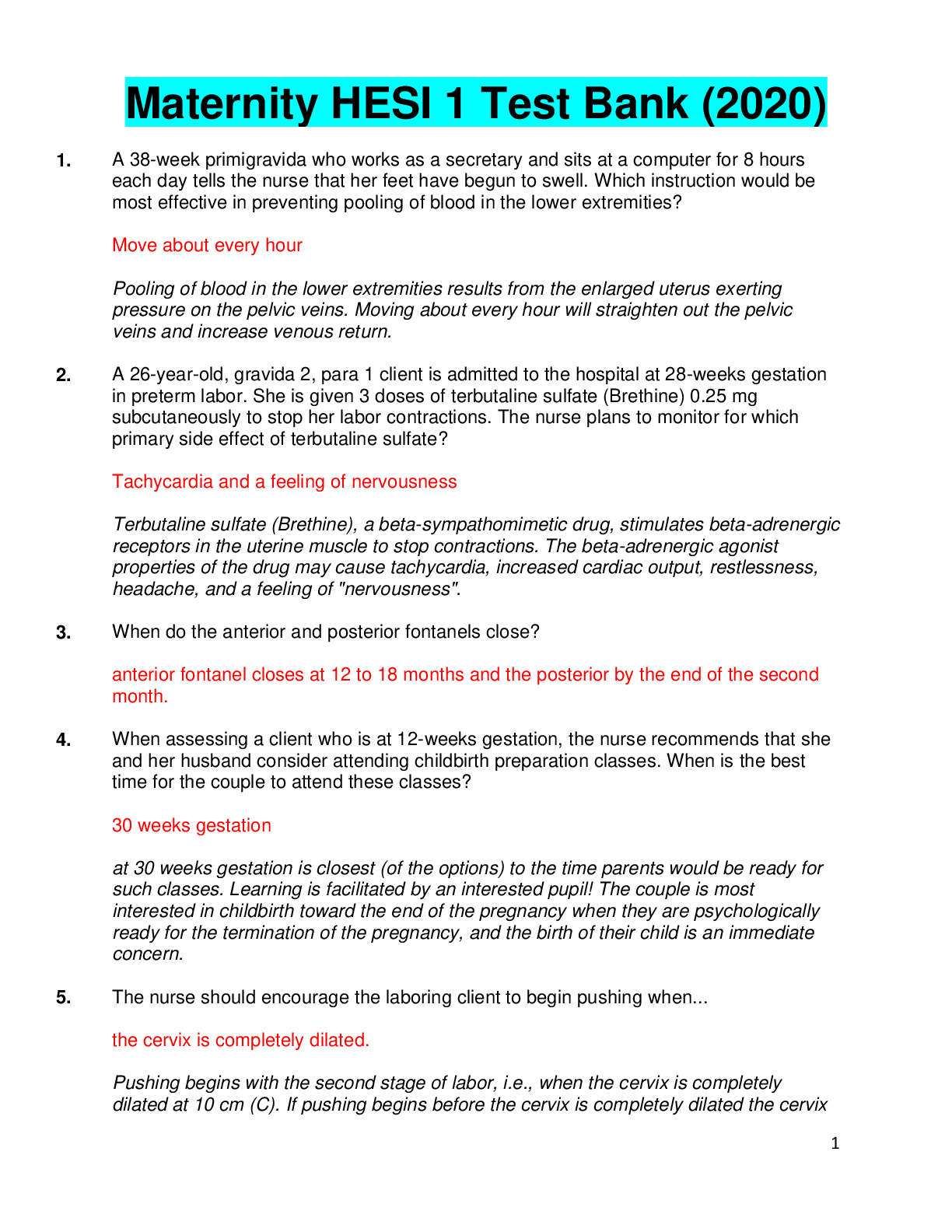

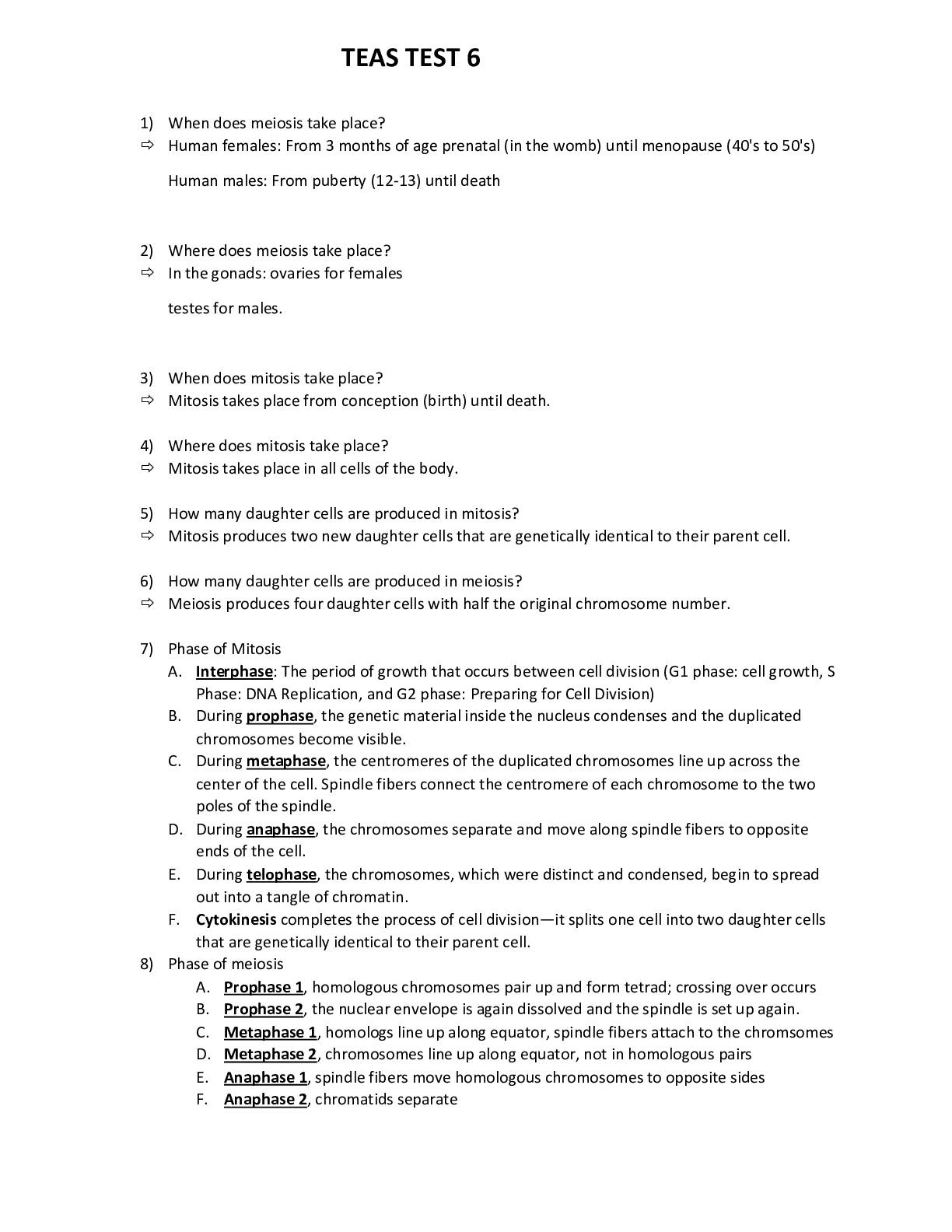
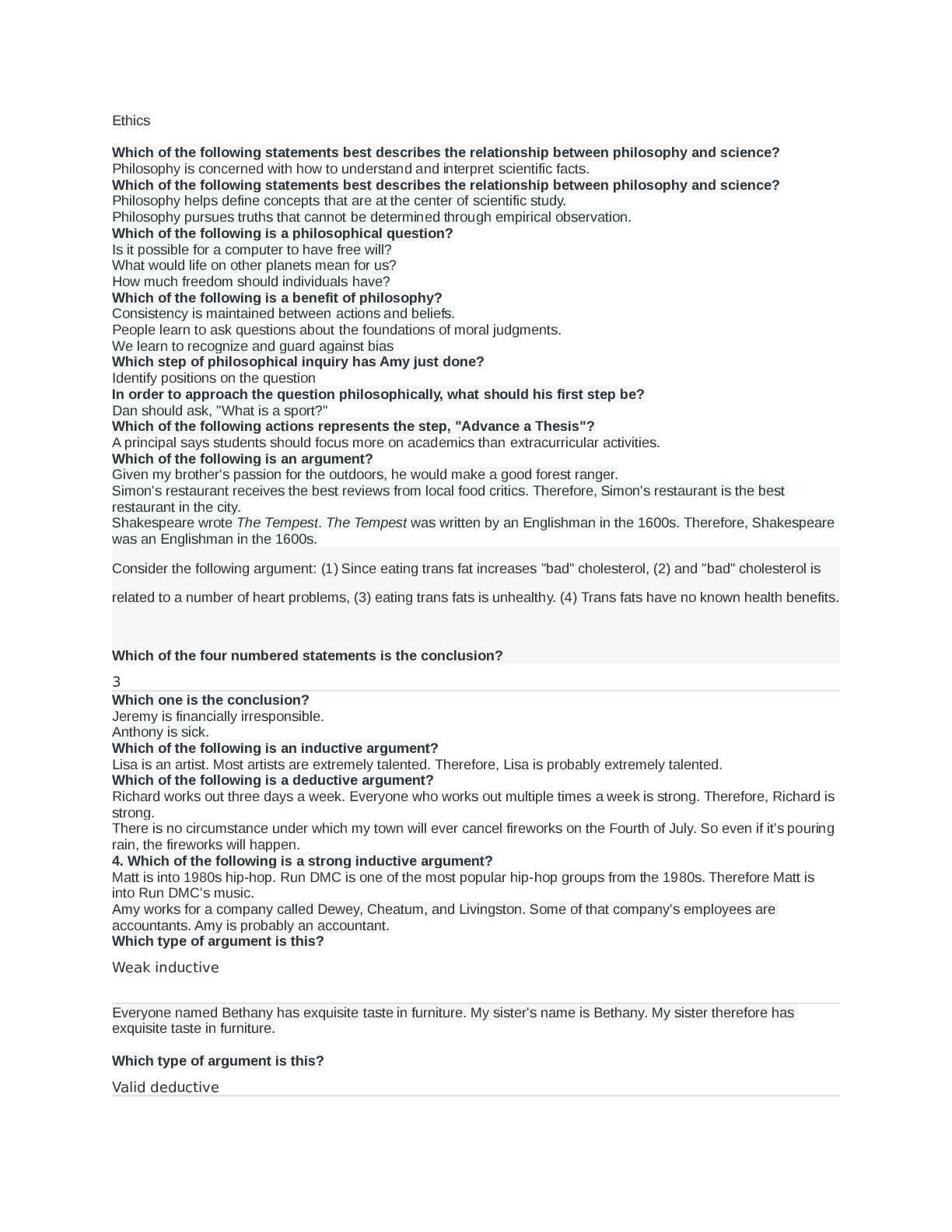


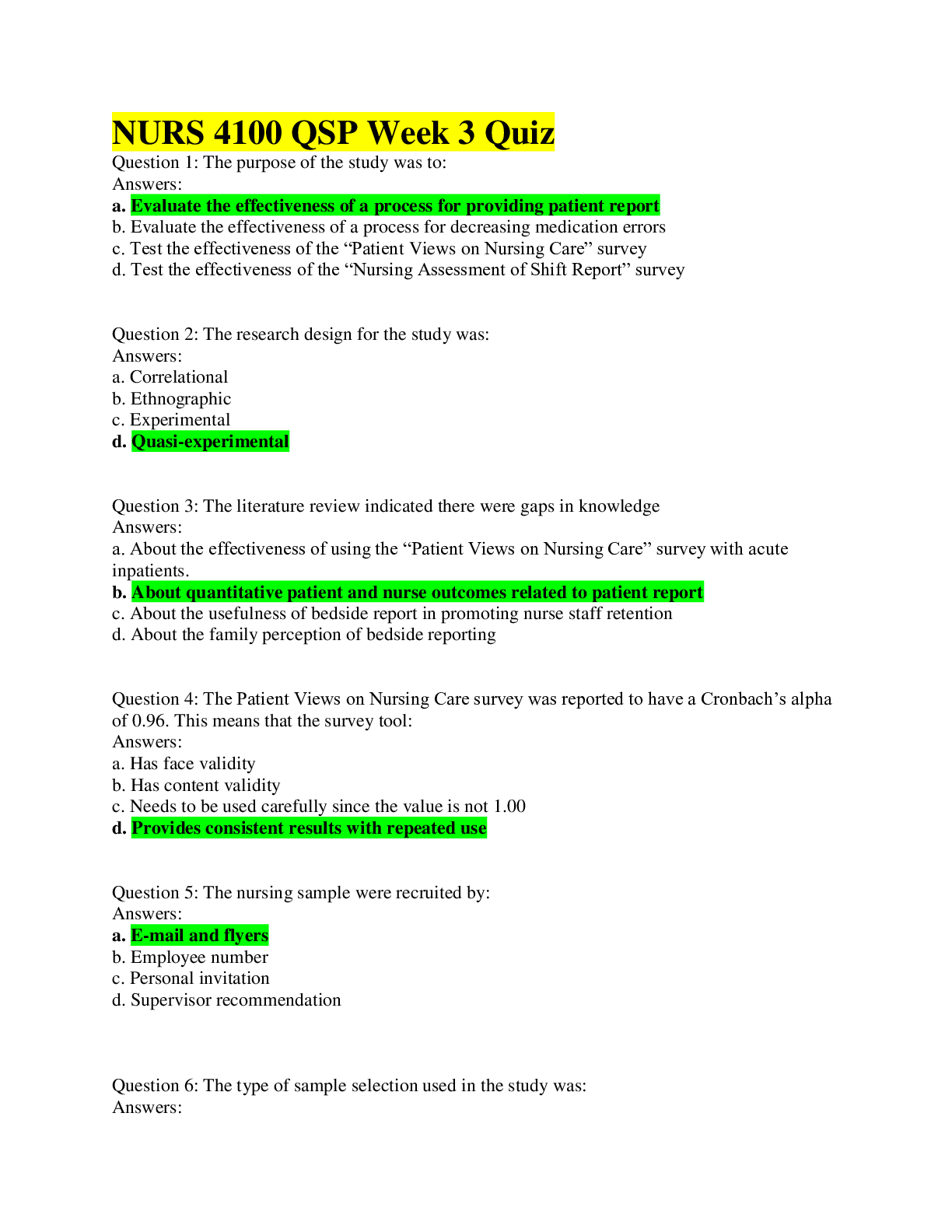
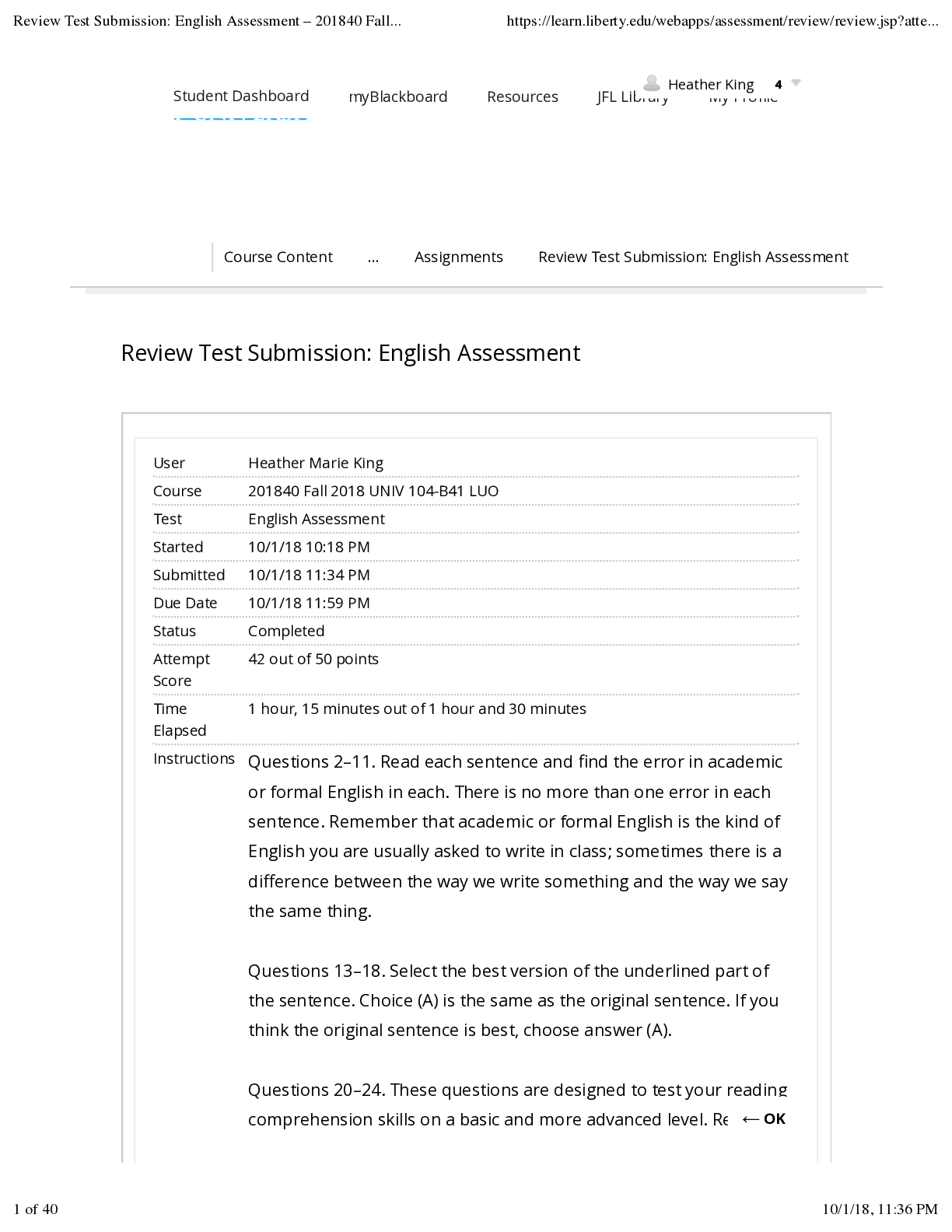

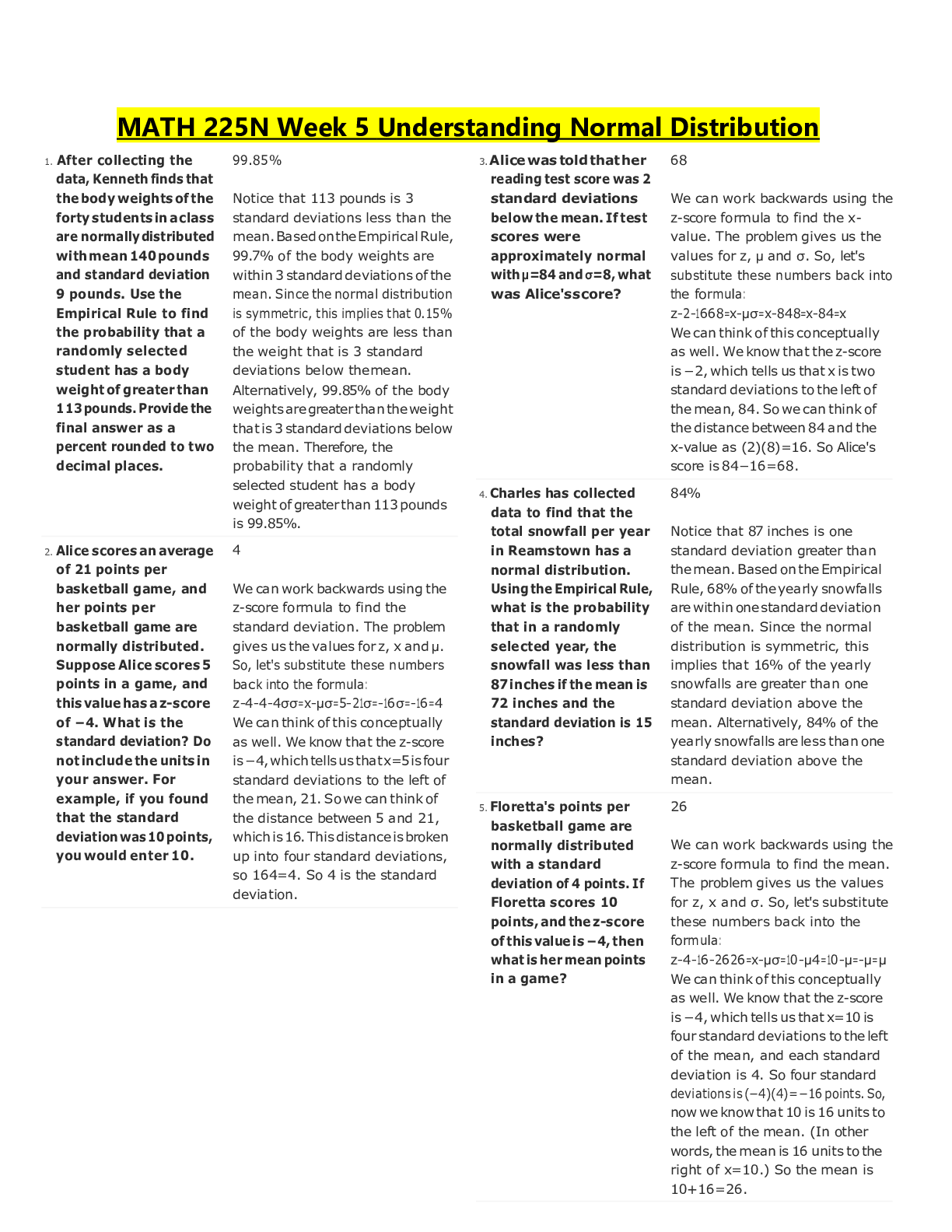
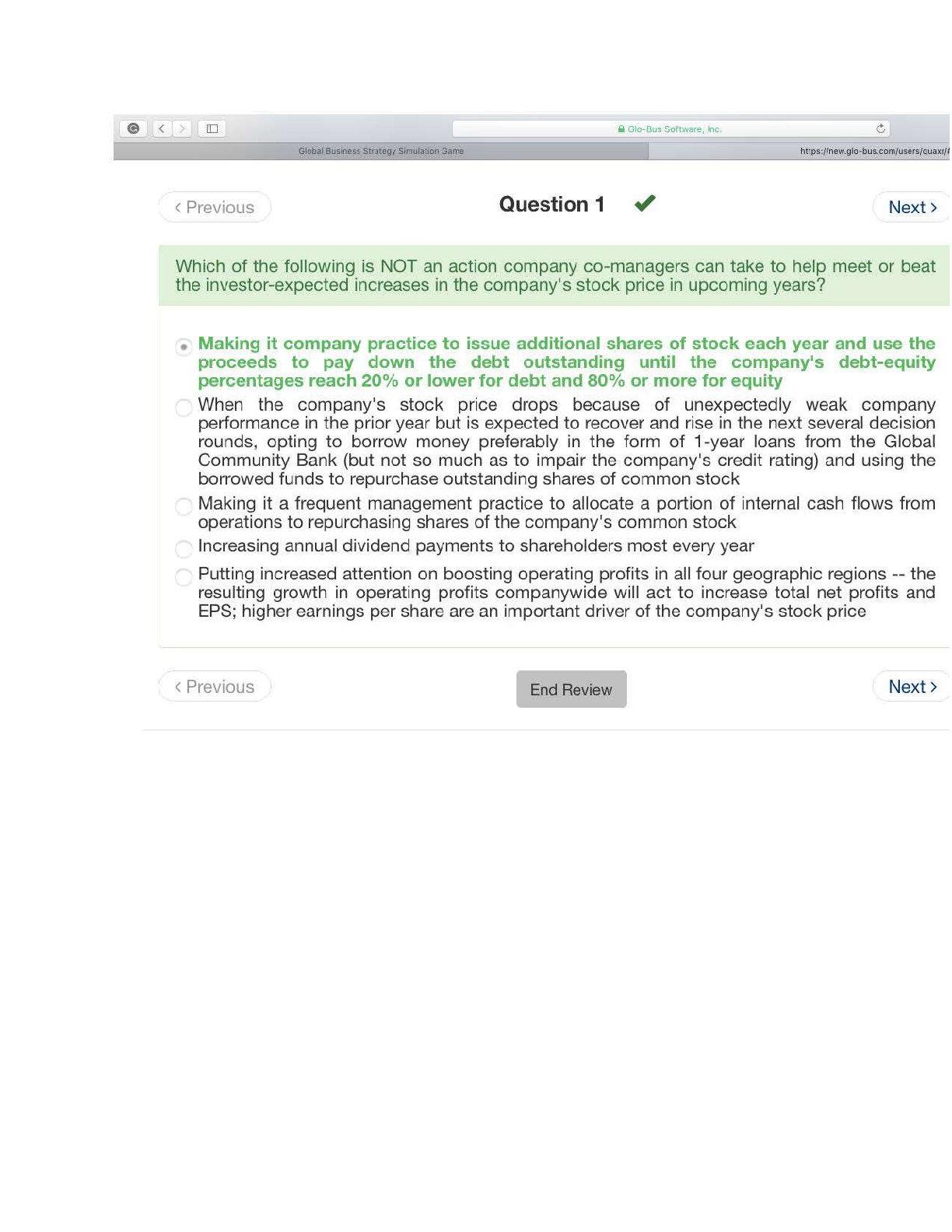
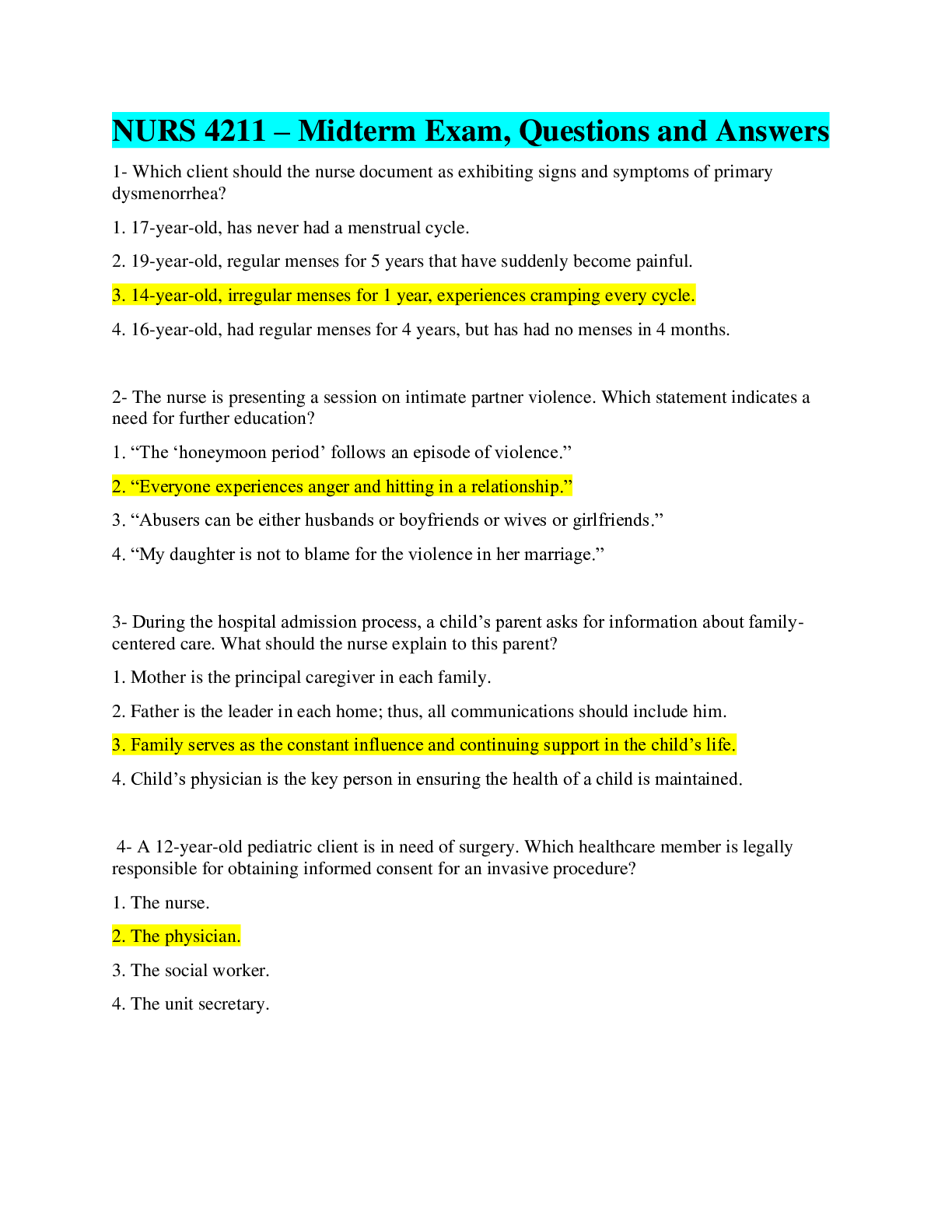



 Graded A.png)
 Graded A.png)

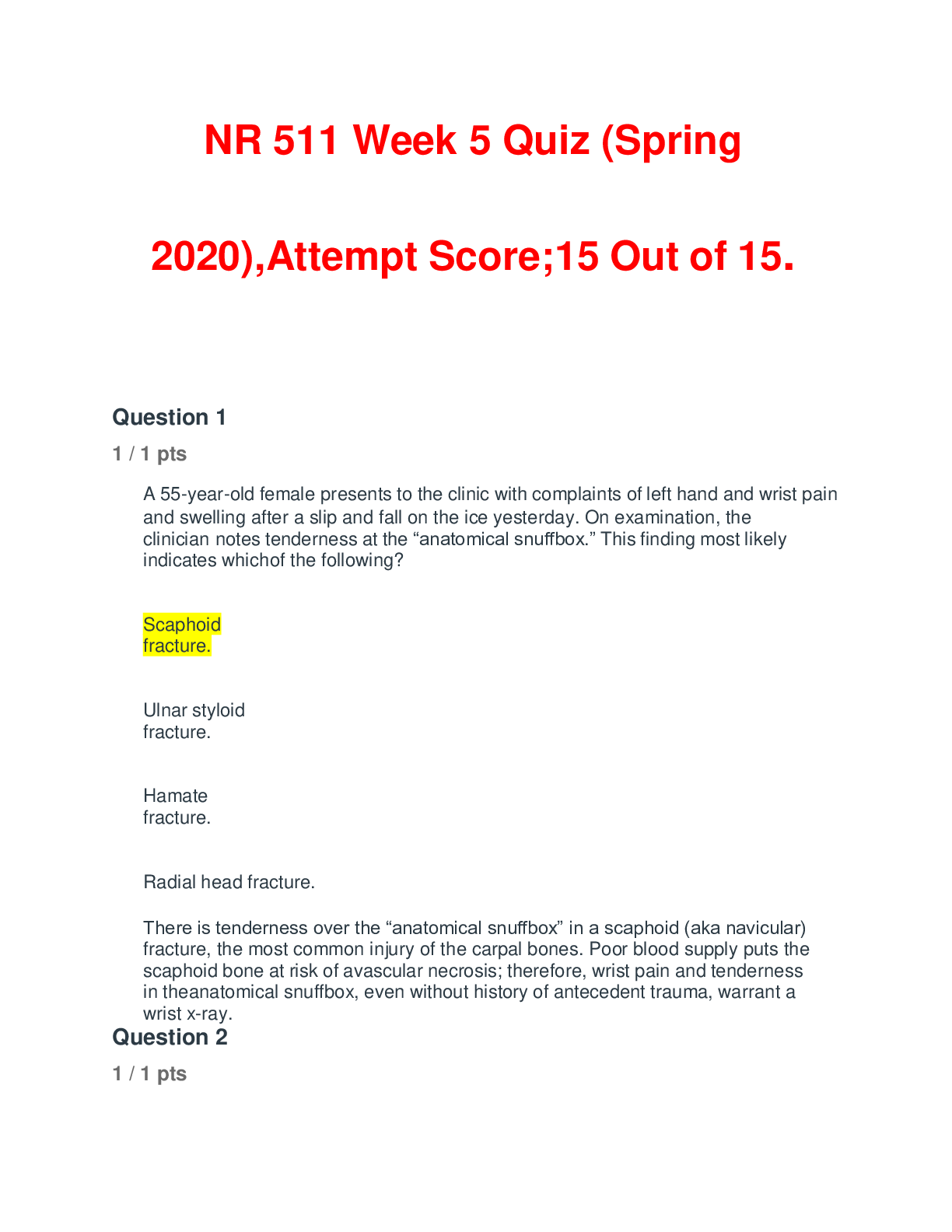


 Graded A.png)
